INSIDE STORY | PAGE 02
Plugged into the Future: Sustainability finds a home in Arizona


INSIDE STORY | PAGE 02
Plugged into the Future: Sustainability finds a home in Arizona





Something big, bold and exciting is happening in the Grand Canyon state. Cutting-edge companies are launching, testing and scaling new technologies in Arizona. Our culture of innovation, highly skilled talent pool, lean regulatory environment, and affordable operating costs provide the perfect platform for business growth and success. Beyond being a place where you can achieve your professional goals, Arizona also provides a lifestyle that allows you to achieve your personal goals. With year-round sunshine, endless outdoor activities, and a positive outlook, we play as hard as we work. It’s this perfect balance that makes life better here.

WINTER
Publisher’s Letter
Sustainability finds a home in Arizona
Community partnerships promote benefits of clean energy
Arizona utilities already preparing for future energy needs Partnerships and innovations help shrink carbon footprint

PUBLISHERS
Sandra Watson Steven G. Zylstra
NAU graduate determined to be part of the solution
EDITOR Don Rodriguez
EXECUTIVE EDITORIAL DIRECTOR Alyssa Tufts
Deep Q-learning detects, combats power grid cybersecurity weaknesses
Environmental Science program leads to shift in thinking
Customizable lab platform leads to deeper analyses
MAGAZINE DESIGNED BY:
CREATIVE DIRECTOR Maddie Santiago
EMAIL techconnect@aztechcouncil.org

For queries or customer service, call 602-343-8324
View more of TechConnect: aztechcouncil.org/techconnect
TechConnect is published by the Arizona Technology Council, 2800 N. Central Ave. #1530, Phoenix, AZ 85004
Entire contents copyright 2023, Arizona Technology Council. Reproduction in whole or in part without permission is prohibited. Products named in these page pages are trade names or trademarks of their respective companies. Publication of TechConnect is supported by the Arizona Commerce Authority.
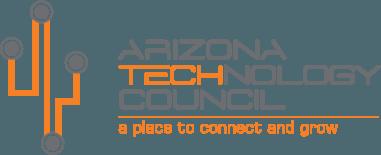

Like this one: Only 11.4% of Arizona’s total electricity came from solar, wind, and energy storage power plants in 2022, according to industry group American Clean Power. That put the state in 25th place in the nation.
Living in the land of endless sunshine would make anyone here think the first figure should be bigger and the other should be higher.
Still, the numbers behind those two numbers pack a powerful punch when it comes to the state of clean energy in Arizona. Nearly 11,500 renewable energy jobs exist in the state, according to the Chambers for Innovation & Clean Energy’s 2022 Arizona Clean Energy Jobs & Economic Impact Report. Add to that, $15 billion in capital has been invested in wind, solar and energy storage projects.
Operating wind, solar, and energy storage capacity in Arizona is credited with generating 3,526 megawatts (MW) in 2022. That’s enough clean energy to power 613,000 homes in the state. Clean energy also resulted in $17.3 million going to local communities through property, state, and local taxes in 2022.
In addition, thanks to wind, solar and storage projects in Arizona, just under 5.3 million metric tons of carbon dioxide emissions were avoided. That is the same as leaving 1.15 million cars in the garage permanently.
It’s unlikely a surprise that the constant sunshine in Arizona provided more power than all other clean energy sources combined and offers giant potential for the solar industry. The state already ranks fifth in the nation for installed solar energy and sixth for solar employment. Solar Energy Industries Association reported 8,278 solar jobs in 2021 and 296 related companies for Arizona.
More recently, nearly 6,000 MW of solar had been installed through the second quarter of 2022 for a total investment of $13.9 million.
Solar makes sense as a viable alternative beyond just the amount of sunshine here. Solar power, especially in the Southwest, is now the energy market’s cheapest source, most price stable and most reliable source. In fact, solar will make up roughly half of the new generating capacity added in the U.S. this year.
Significant solar installations already are online in the state. They include:
• Sunstreams in Hassayampa was developed from 2020 to 2021. The 398.4-MW project produces enough electricity to power nearly 60,500 homes.
• Saint Solar in Coolidge is among the largest solar installations here. Completed in 2021, this 135-MW solar project has enough electric capacity to supply nearly 20,500 homes.
• Intel’s 129-MW East Line Solar project in Coolidge is the largest corporate project in the state.
OK, enough with the numbers. For the real stories on what’s happening in clean energy in Arizona, I invite you to take a look at the rest of this issue of TechConnect.
Call it powerful reading.

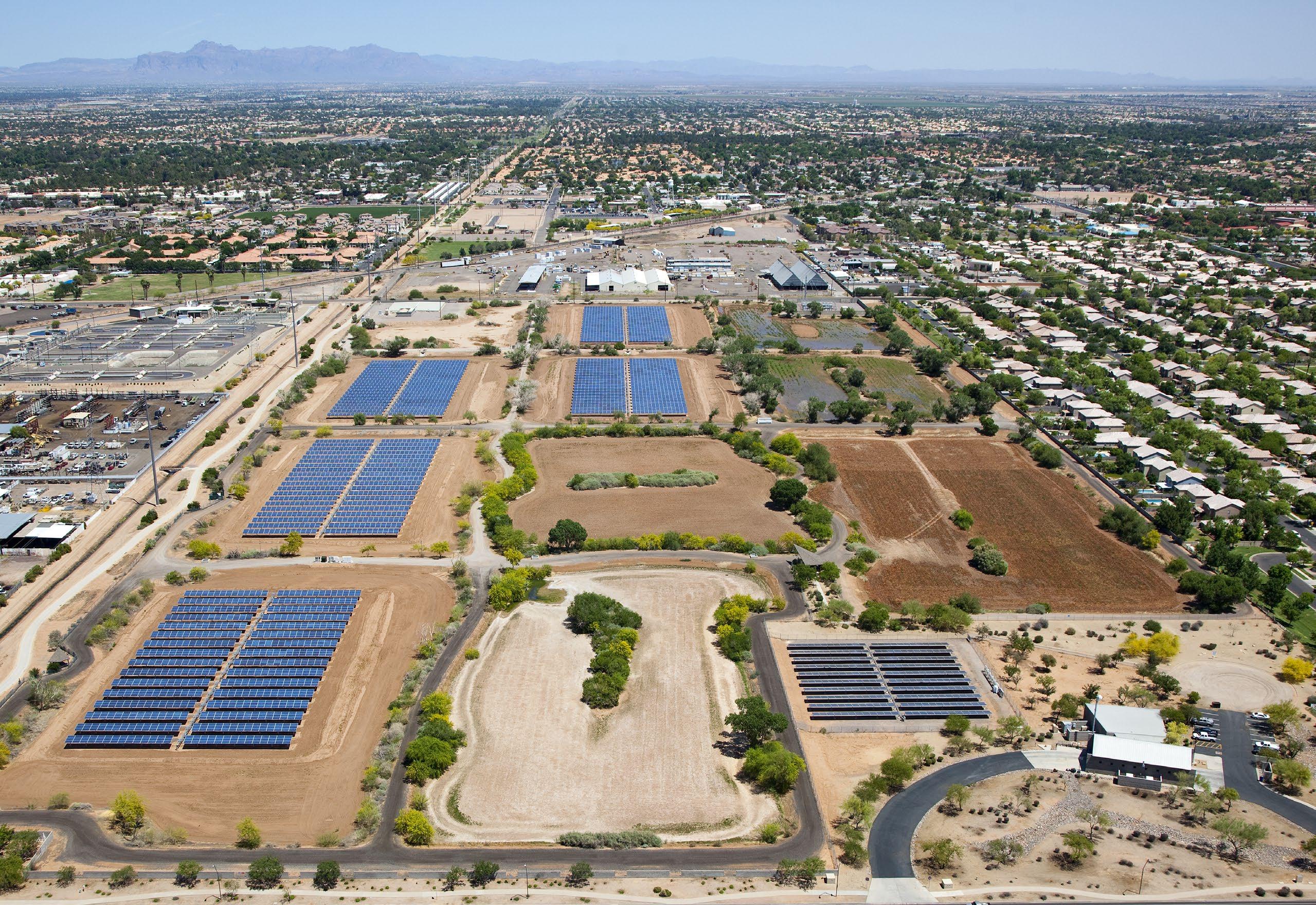
Arizona is emerging as one of the nation’s top destinations for sustainable industries.
Sectors including electric and zero-emission vehicle manufacturing, next-generation battery technology, solar and other clean energy production, biodegradable materials, freshwater science, agritech, and more have flourished in recent years.
Last spring, Nikola Motors celebrated the production launch of its first fully electric semis from its 1-million-square-foot factory in Coolidge. The gleaming, white-and-black Tre BEV semi-trucks rolling off production lines are headed to customers across the United States, adding 645 horsepower to the slogan “Made in Arizona.”
Speaking at the event, CEO Mark Russell said, “What Nikola is about is trucks, but more than trucks. Nikola is about energy and making a system that is sustainable in the future — that can go on forever.”
Additional electric vehicle (EV) manufacturers in the state include Lucid, ElectraMeccanica, Atlis Motors, and Zero Electric Vehicles.
Arizona’s EV makers will soon benefit from the nearby operations of large-scale battery producers including American Battery Factory, which is investing $1.2 billion to build its first battery manufacturing facility in the U.S. in Tucson, creating 1,000 jobs. The day after American Battery Factory’s big announcement, Sion Power announced it is expanding its battery manufacturing operations in Tucson, creating more than 150 jobs.
The expansions add to KORE Power’s 2021 announcement to build a battery manufacturing facility in Buckeye, creating 3,000 jobs.
In early May, Li-Cycle celebrated the grand opening of a new battery recycling plant in Gilbert. Li-Cycle’s proprietary technology boasts an industry-leading recovery rate of up to 95% resource mass recovery through a zero-waste, environmentally friendly process.
Similarly, battery innovator and 2021 Arizona Innovation Challenge awardee Ampcera is commercializing solid-state battery materials for electric vehicles and consumer electronics from its Tucson facility.
“We see great potential in scaling up manufacturing in Arizona,” says Ampcera CEO Sumin Zhu. “The state is very businessfriendly, there is a strong talent pool and many cost advantages. The presence of a growing EV supply chain in Arizona is also very attractive for our future business development.”
In 1987, the United Nations Brundtland Commission defined sustainability as “meeting the needs of the present without compromising the ability of future generations to meet their own needs.”
In addition to EV and battery manufacturers, a wide range of sustainable industry changemakers have put down roots in Arizona.

Headquartered in Gilbert, Footprint is a global leader in sustainable, compostable packaging solutions; First Solar, headquartered in Tempe, is one of the world’s largest developers of solar panels and utility-scale photovoltaic systems; Meyer-Burger is building its first U.S. solar module manufacturing site in Goodyear; and XNRGY has plans for a 1-million-square-foot manufacturing facility in Mesa to develop sustainable air handling systems.
Air2O, a past Arizona Innovation Challenge awardee with its North American base in Phoenix, is a pioneer in advanced evaporative cooling technology. It provided cooling services for the massive soccer stadiums at the 2022 World Cup in Qatar.
Air2O co-founder and CEO Michael Sullivan says besides Arizona’s sunny climate, it was the state’s entrepreneurial environment that attracted the company. “Arizona has a vibrant culture to support startups,” he says. “Simply having access to that local support means more than most people realize.”
Arizona is a natural fit for technologies driving the transition to a low-carbon future.
According to the U.S. Energy Information Administration, Arizona ranks in the top five states in total solar-powered generating capacity from both utility- and small-scale installations and ranks second in solar energy potential. Arizona also is one of four states with electricity generation from utility-
scale solar thermal technologies, which concentrate sunlight to heat fluids that spin electricity-generating turbines.
Arizona’s sustainable industry growth means jobs, and lots of them. Nearly 300 solar companies operate in the Grand Canyon State. Advanced Energy Economy, a national industry association, estimates Arizona supports nearly 60,000 jobs in the advanced energy sector.
Funding from the Inflation Reduction Act Arizona could add more than 70,000 clean energy jobs by 2025, according to a report by E2 (Environmental Entrepreneurs), a national nonpartisan group that advocates smart policies to benefit the economy and the environment.
Add to this flourishing environment some of the world’s top-ranked universities and community colleges.
For the third year in a row, Arizona State University ranked No. 1 in the Times Higher Education sustainability rankings, coming in ahead of the Massachusetts Institute of Technology, New York University, Michigan State University and Penn State University.
In addition, The University of Arizona’s Center for Innovation recently launched a business incubator at Biosphere 2, the three-acre ecological laboratory north of Tucson. An inaugural class of startups focusing on renewable energy and sustainable technology include Over the Sun, SolarSpace, Tectonicus Constructs and Red Sea Farms.
With industry, government and academia in close alignment, expect Arizona to continue to be a global leader in advancing sustainable technologies.
Find more about Arizona’s emerging technologies at azcommerce.com
When it comes to proponents of clean energy, the utilities and companies acting individually capture the most attention. But in Arizona, partnerships working behind the scenes are helping to shine a light on the benefits of this developing sector.

Since 1991, the nonprofit Arizona Solar Energy Industries Association has been in operation. More commonly known as AriSEIA, the trade organization currently represents the solar, storage and electrification industry; solar-friendly businesses; and others interested in advancing solar and complementary technologies in Arizona. AriSEIA recently held it 2022 Arizona Energy Future: Innovation, Technology & Economic Opportunity Conference at Arizona State University.
The Arizona group is a state chapter of the Solar Energy Industries Association, a national trade organization headquartered in Washington, D.C.
AriSEIA’s mission is to develop and support policies that create opportunities advancing Arizona’s economy through solar energy, storage and electrification. The group accomplishes its mission by educating the public and key decision makers about the entities it represents. It advocates sustainable job creation in deployment of solar and complementary technologies and collaborates with stakeholders to encourage use of Arizona’s greatest natural resource: the sun.
More recently, the nonprofit Arizona Sustainability Alliance (AZSA) was launched in 2017 to create and support cutting-edge, project-based sustainability solutions in Arizona through civic engagement, collaboration and education.
Its objectives are to promote sustainable energy by strategically implementing renewable energy projects in the Phoenix Metropolitan Area while creating community events aimed
at demystifying renewable energy and promoting the overall growth of sustainable energy. AZSA also educates the public about renewable energy in creative, innovative and interactive ways through projects that also incorporate community health and beautification.
AZSA’s projects include:
Arizona Clean Energy Workforce Development Program – The project focuses on providing essential job skills to students from disadvantaged communities and contributing to the clean energy revolution. By partnering with Title I school districts, public and private partners and industry professional certification programs, this project provides students with job skills in a variety of clean energy sector pathways. The project includes creating workforce development training in energy management, building science, distributed energy resources installation and maintenance, and adaptive design for resilience.
Female Veterans Housing Solar Installation – The project involves cross-sector collaboration and partnership of the Arizona Sustainability Alliance, Habitat for Humanity and the U.S. Veterans Initiative to install solar panels on two new homes that will support female veterans with a safe, sober living environment where they can receive treatment for military sexual trauma and substance abuse, as well as work re-entry counseling and assistance in receiving disability payments.
East Valley Solar Co-Op – In 2019 AZSA partnered with Solar United Neighbors of Arizona to launch a community solar coop that resulted in 16 contracts. That is a 40% conversion rate, above the targeted 30%. The expectation was to install 91.5 kilowatts-DC of solar capacity. Over their lifetime, these solar installations will produce about 2.7 million kilowatt hours of electricity. This also is the equivalent of about 1,900 metric tons of carbon dioxide being avoided.
To learn more, go to ariseia.org for AriSEIA and azsustainabilityalliance.com for AZSA.
While old habits may die hard, Arizona utilities are embracing new ones to deliver clean energy that can power the state now and into the future.
Probably the boldest move toward where they are headed came in early 2020 when Arizona Public Service (APS), the state’s largest energy company, announced it was setting a goal to deliver clean, carbon-free electricity to its customers by 2050. That is no small feat when you consider APS serves more than 1.3 million homes and businesses in 11 of the state’s 15 counties. The goal includes a 2030 target of achieving a resource mix that is 65% clean energy, with 45% of its generation portfolio coming from renewable energy.
Salt River Project (SRP) is expanding its mix of clean, renewable energy sources as part of its plan to cut its carbon intensity 90% by 2050.
To help reach that target, SRP has set a goal of nearly half of energy sources to be carbon-free by 2025.
It’s worth noting that SRP was the first Arizona utility to use wind power when it bought 63 megawatts (MW) of power from the Dry Lake Wind Power Project in Navajo County in 2008.
More recently, it entered into a contract to buy enough wind energy from the Babbitt Ranch Energy Center north of Flagstaff to power 40,000 homes.
Tucson Electric Power (TEP) has set a goal of cutting its carbon emissions 80% percent by 2035. To help do this, more than 70% of its power will come from wind and solar resources.
On an annual basis, TEP already can produce about 30% of its power from renewable resources. One source comes from the Wilmot Energy Center, which includes a 100 MW solar array and a 30 MW battery energy storage system south of Tucson International Airport. The array generates enough power every year to serve more than 25,000 homes.
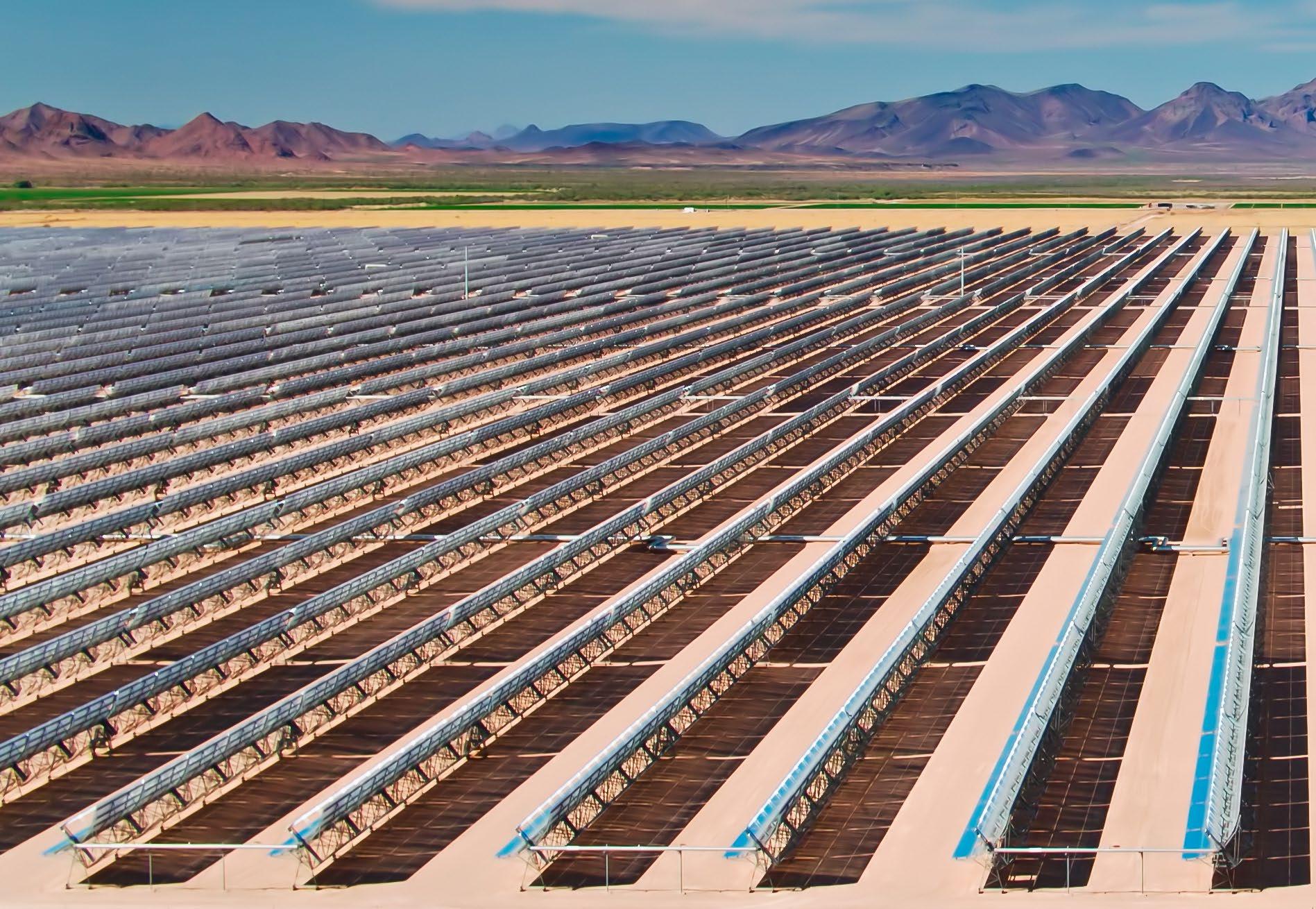
Before they all reach the milestones set for the future, they must shed some sources that won’t fit in. That includes moving away from using coal to create electricity. By 2031, APS expects to end all coal-fired generation—seven years sooner than previously projected. Add to that TEP plans to retire its two coal fired units at the Springerville Generating Station in 2027 and 2032.
Largely due to the age and complexity of coal plants (e.g., APS’s Four Corners Generating Station is more than 50 years old), the cost of electricity from these plants is no longer competitive with other power sources. While the price of electricity generated from aging coal plants is approaching $80 per megawatt hour
(MWh), new solar projects that include storage for nighttime generation are selling electricity for $14 to $25 per MWh.
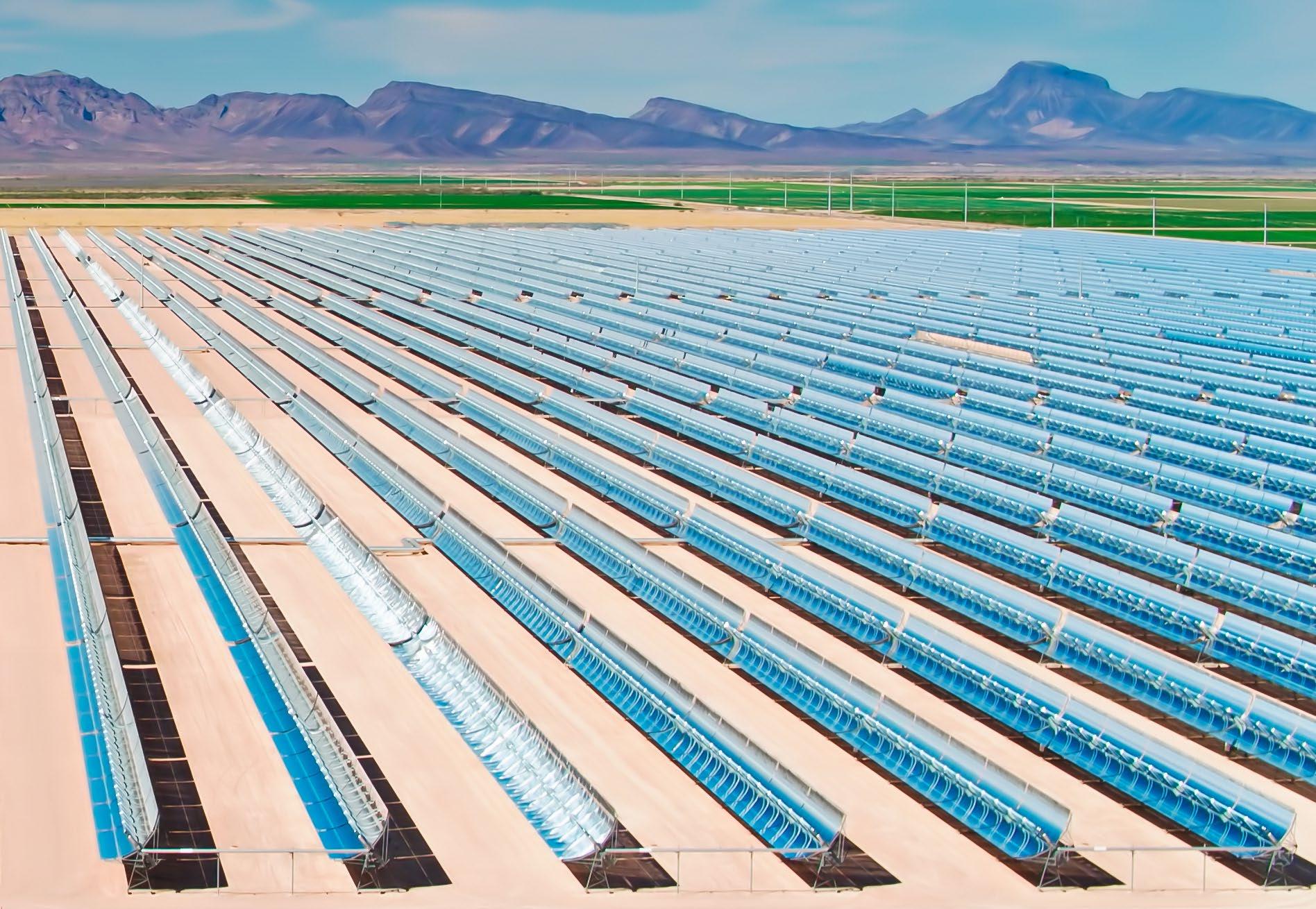
But it’s not like someone will flip the switch by the end of the decade and this all will magically happen. APS already is at work.
For example, the utility is constructing its Agave Solar Plant in Arlington to meet a goal of being in service by summer. More than 400,000 panels will track the sun across the sky to generate 150 MW, which is enough energy to power 24,000 homes.
APS’s portfolio of additional new resources is expected to be ready for customers no later than 2024 and include maximum generated output of 425 MW by solar power, 238 MW by wind power and 635 MW by battery storage.
APS also is conducting an all-source request for proposals (RFP) through the 2025-2027 time frame in order to meet the power needs of customers with affordable, reliable electricity. It is seeking approximately 1,000 to 1,500 MW of resources, including 600 MW to 800 MW of renewable resources, which significantly will boost the amount of clean energy on the APS electric system. Proposed projects must be in service beginning in 2025 through June 2027.
The new resources that will come from the new RFP will add to the more than 1 gigawatt (GW) of clean energy secured through
an all-source RFP and separate battery energy storage RFP issued in 2020. If you’re wondering what 1 GW really means for customers, APS estimates approximately 150,000 homes in its territory can be powered by this amount of energy. According to the U.S. Department of Energy, 1 GW is also the equivalent power of more than 3 million solar panels, 110 million LED light bulbs and more than 9,000 electric cars.
On the energy storage front, expect even more capacity to be added to what already has been achieved. These plans should keep things humming along after the sun sets and the wind dies down:
• SRP has added two battery energy storage systems as it moves toward 800 MW of energy storage by 2024.
• APS has set 2025 as its deadline for adding 850 MW of battery storage by 2025.
• TEP has set a goal of 1,450 MW in battery storage by 2035, according to its resource plan.
While the plans for the future may seem ambitious, keep in mind what Arizona’s utilities already have achieved to curb carbon emissions. They indeed are working to make a clean break from the power industry’s past.
shrink
BY JESSA B. TURNERLooking to the future, clean technologies are becoming more a necessity than a luxury. With headlines filled with news about climate change, greenhouse gases, carbon emissions and the depleting ozone layer, society demands better technology for a cleaner environment.
Universities and other institutions of higher education have important roles as leaders in sustainability projects because it is critical to the education students receive, as well as to the future of our society. Also, universities have the ability to leverage great research strength in this industry for the future of Earth. The Arizona Institute for Resilient Environments and Societies (AIRES) was established to connect interdisciplinary groups of faculty, students and projects across The University of Arizona’s campus, from climate science to public policy, water resources and beyond. Led by Sharon Collinge, AIRES encourages solution-focused research in topics such as climate science, adaptation and resilience solutions; national security and the environment; data, informatics and modeling; biodiversity, conservation and ecosystems; and many more.
UArizona is committed to become a more sustainable campus and fiscal 2022 marked the first full year since the start of the large-scale renewable energy agreement between the university and Tucson Electric Power. The agreement provides
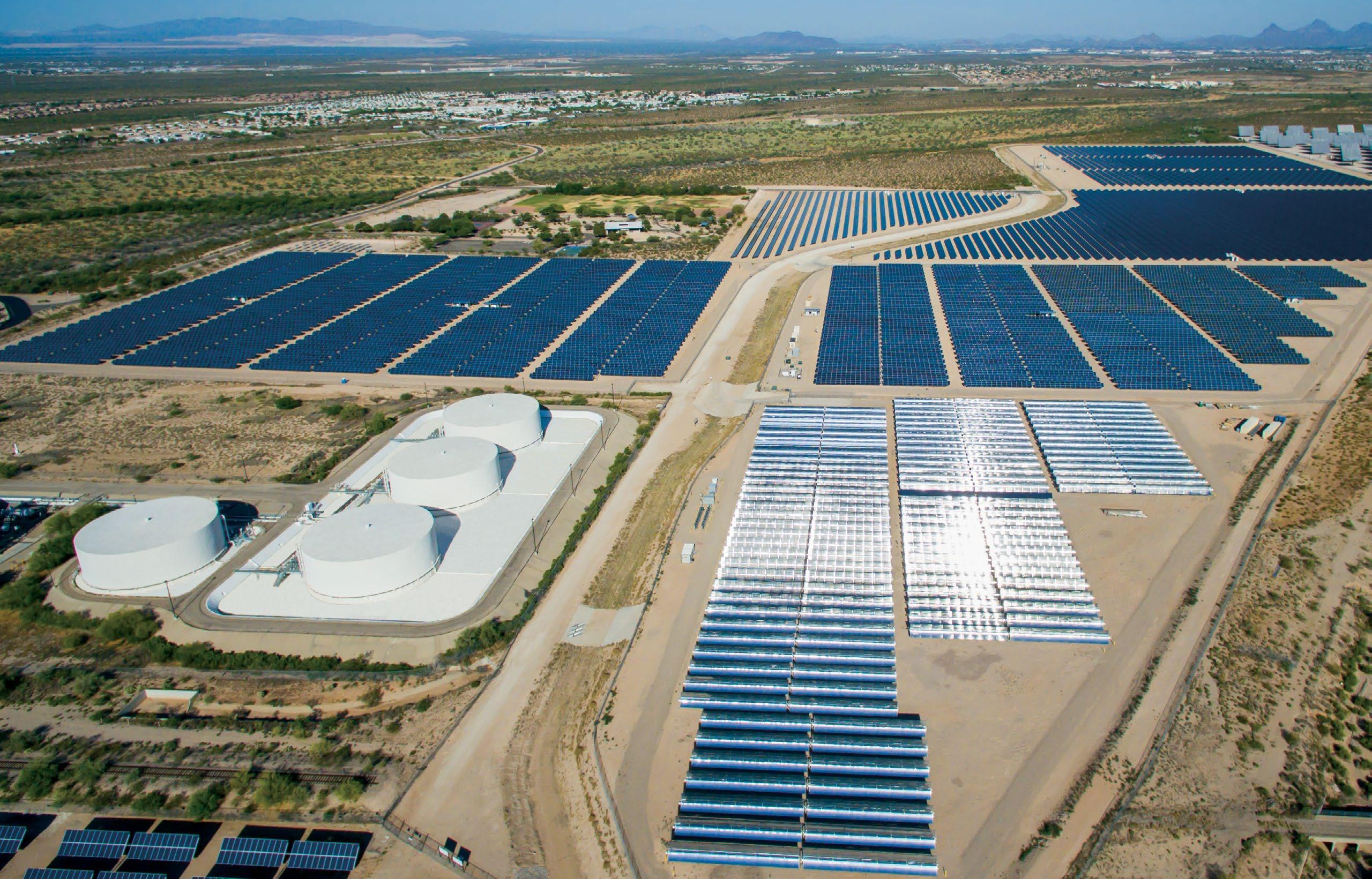
clean, renewable energy that eliminates all scope 2 emissions –those that result from the generation of electricity, heat or steam purchased from a utility. Approximately 65,000 metric tons of carbon dioxide emissions have been mitigated over the last fiscal year, thanks to the agreement coordinated by the university’s Office of Sustainability. That’s the equivalent of taking nearly 14,000 gas-powered vehicles off the road for one year.
UArizona has a long-standing history of employing renewable energy resources and research that advances solar energy. The university leveraged its assets and optimal sun radiance to develop an innovative renewable energy project at the UA Tech Park known as the Solar Zone, which is one of the nation’s largest multi-technology solar demonstration sites connected to the grid. This living lab occupies 223 acres of land, and hosts eight companies that test 10 technologies with the capacity to generate 25 megawatts of power and 10 megawatts of power storage.
Power generation and distribution are only one component of the Solar Zone. Equally important is research and development. Phase one of the Solar Zone focus is installation of multiple solar technologies so that when the power is generated, these technologies can be tested and evaluated side-by-side under identical operating conditions.
University researchers are testing everything from solar power forecasting to the environmental impact of solar energy installations.
Partnerships and innovations help carbon footprintPhase Two focuses on research and the development of energy storage, grid optimization and microgrids, distributed solar systems, and integrated and embedded solar materials. The phase will allow the demonstration of products and their cost-effectiveness in the market.
As a Research 1 institution with $761 million in total research activity, UArizona is a leader in renewable energy and sustainability research that directly translates into leading-edge inventions. The world-class research and innovation spurred by the university have ignited a bustling startup scene. The UArizona’s innovation landscape has rapidly evolved to better engage with entrepreneurs and the community to bridge resources and accelerate the most promising inventions.
UArizona surrounds entrepreneurs with the support they need via the University of Arizona Center for Innovation (UACI), an incubator network that focuses on science and tech-based startups. Here, technology entrepreneurs work side by side in a fast-moving, collaborative and creative environment. They are guided through a continuum of education and activities using a 28-point structured roadmap program with the advantage of hands-on support from people who have a track record of success.
With 77 startups in the UACI program, the 26 focused on cleantech and sustainability are:
• Anar Solar
• Better Solar
• CarbeniumTec (TLA)
• Cibus21
• CleanFi
• DCTREX
• Dimensional Energy
• Do Energy
• EarthEn
• Hexafeast
• Leap Photovoltaics
• Leaptran
• Nature’s Cooling Solutions
• Noah LLC
• Portable Solar
• ProfiKomp
• The R&D Lab/Starling Roofing For Solar
• RCAM Technologies
• Red Sea Farms
• Resonant Energy
• Sarinx
• Solar Space
• Sun Moksha
• Sylvan Source
• Tectonicus Constructs –Solar River
• TG Recycling
Startups work on innovations ranging from solar energy software to renewable energy batteries and storage, from industrial fuels made from carbon dioxide to sustainability and safety in insectbased food systems.
UACI is proud to have an incubator outpost at the Biosphere 2 centered around renewable energy and sustainable tech startups. The Biosphere 2 consists of a unique large-scale experimental apparatus housing seven model ecosystems modeled on Earth, the first biosphere. UACI outpost at Biosphere 2 offers interconnected spaces intentionally designed and constructed to accommodate different types of users, as well as brings together resources needed to advance technology.
The center was selected by the U.S. Department of Energy’s National Renewable Energy Laboratory (NREL) five years ago as a power connector to foster sustainable innovation around the country.
This is a diverse and powerful network consisting of national laboratories, universities, energy incubators, facilities, industry partners and other organizations essential to the success of new inventions.
UACI is one of 16 power connectors in the U.S. and serves as the nation’s hub for the Southwest region, which includes the states of Arizona, New Mexico, Utah and Nevada
As a power connector, UACI attracts, engages and supports new talents in the solar field.
It is in its fourth year of providing recruitment and team support in the American-Made Challenges Solar Prize. The competition enables the rapid development of innovative solar solutions by providing resources and support to entrepreneurs as they transform concepts into early-stage prototypes ready for industry testing. This collaboration combines UACI’s unparalleled entrepreneurial support system with the American-Made Network’s highly revered national laboratory research base.
UACI is also supporting the NREL Inclusive Energy Innovation Prize, which seeks to enable and enhance business and technology incubation, acceleration, and other communitybased and university-based entrepreneurship and innovation in climate and clean energy technologies.
Together, they support competitors in the Solar Prize and Inclusive Energy Innovation Prize to create a sweeping portfolio of innovations primed for additional investment and commercial scale-up. UACI annually provides applicant support to solar energy and waterpower innovators seeking funding through the Department of Energy’s SBIR/STTR program. Through SBIR/STTR, small businesses can receive up to $200,000 to engage in high-risk, innovative research and development with the potential for commercialization. Successful awardees can then receive up to $1.1 million for prototype development.
UArizona connects academia and industry through innovation. By showcasing advanced technology and research breakthroughs, the innovation culture flourishes. Through technology commercialization, universities have become an important source of innovations to advance society. UArizona builds on this culture by developing pathways to move those inventions outward into Arizona and beyond, enriching life for all. Southern Arizona is making great strides in developing clean technology and decreasing its impact on the environment.
As partnerships and innovations continue to grow with UArizona research, the university continues to shrink its carbon footprint.
Jessa B. Turner is director of communications at Tech Parks Arizona.
Our future depends on renewable energy, and the world needs engineers to build toward a better tomorrow. This realization drove Samirah Gnangbe to focus her career on engineering clean energy.
Gnangbe came to study mechanical engineering at Northern Arizona University from the Republic of Côte d’Ivoire, also known as Ivory Coast. When she learned about the relationship between fossil fuels and climate change, she began to see the ways her home is vulnerable.
“In my country we heavily rely on nonrenewable energy resources, like coal, natural gas or offshore oil,” she says. “Not only do we experience air pollution, which affects the health of our population, but more than half of the population does not have access to energy.”
Determined to be part of the solution, Gnangbe sought an education that could provide the foundation for a career in clean, sustainable energy. She looked for universities that were actively engaged in energy research, and she found NAU.
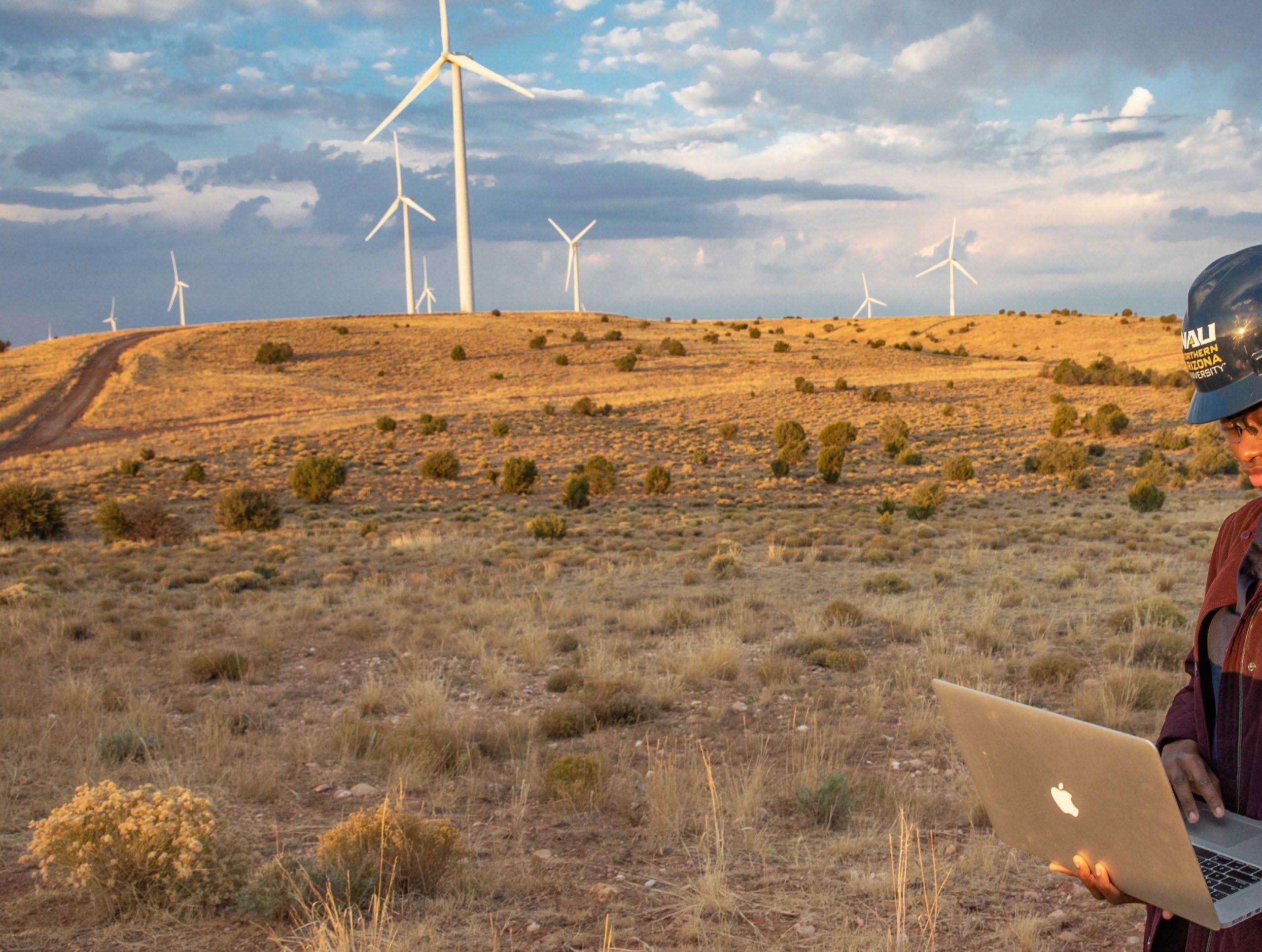
Between the university’s Clean Energy Research and Education initiatives and offerings like the undergraduate wind energy certificate, NAU stood out as a top choice to Gnangbe. The final push she needed came with encouragement from Thomas Acker, a mechanical engineering professor who was leading an international effort to advance renewable energy.
Gnangbe graduated from NAU in May 2022 with a bachelor of science in mechanical engineering. She is currently working on her master of science in mechanical engineering at Iowa State University, where she is a teaching assistant in the Heat Transfer Laboratory.
“I’m really interested in research, so I’ll go for a Ph.D.,” she says. “I want to become an entrepreneur as well, to have my own company. I’m really hoping I can go back to my country and bring back what I’ve learned here.”
Acker recently retired from NAU, and now serves as senior principal research engineer for the Salt River Project’s Innovation & Development Department, where he helps the organization decarbonize and navigate the ongoing energy transition.
NAU graduate determined to be part of the solution
While a student at NAU, Gnangbe joined the WindJax Energy Club, which participates in the U.S. Department of Energy’s annual Collegiate Wind Competition (CWC). The WindJax was one of 12 teams in the May 2022 competition, where they won overall second place.

The 2022 CWC focused on the challenges associated with fixed-bottom offshore wind energy projects. By participating in the competition, students developed the skills, experience and industry connections needed to help them break into the growing offshore wind energy industry and the wider renewable energy industry.
The event was held in conjunction with the American Clean Power Association’s CLEANPOWER 2022 Conference & Exhibition in San Antonio, Texas. NAU advisors on the project were senior lecturer David Willy and associate professor Venkata Yaramasu.
Kerry Bennett is a science writer for Northern Arizona University
NAU energy educators work across campus to engage students in thinking about and finding solutions for our future energy needs. The 15-credit undergraduate certificate in wind energy, for example, prepares students for professional careers in the wind industry and in wind energy research and development. Students in engineering, the physical sciences or math have the opportunity to learn how to analyze and design wind turbine mechanical, electrical and control systems. They are also introduced to wind resource assessment and wind power plant design.
NAU participates in a wide range of research encompassing the major renewable energy technologies and issues.
Energy policy: Energy experts play an active role in the dialogue about energy issues on the local, regional, and national level. NAU researchers are looking at how renewable energy policy drives project development and influences economic health in Arizona and beyond.
Wind: NAU is a regional and national leader in wind energy research, with projects that reach internationally. Faculty researchers provide wind maps and data for Arizona, maintain wind resource assessment capabilities and perform research related to grid integration of wind power, wind resource modeling and wind energy economics and policy.
Solar: Researchers focus on grid integration and interconnection of solar electricity, as well as solar thermal and residential solar systems.
Hydropower: NAU experts are looking into how hydro can play a crucial role in renewable energy deployment.
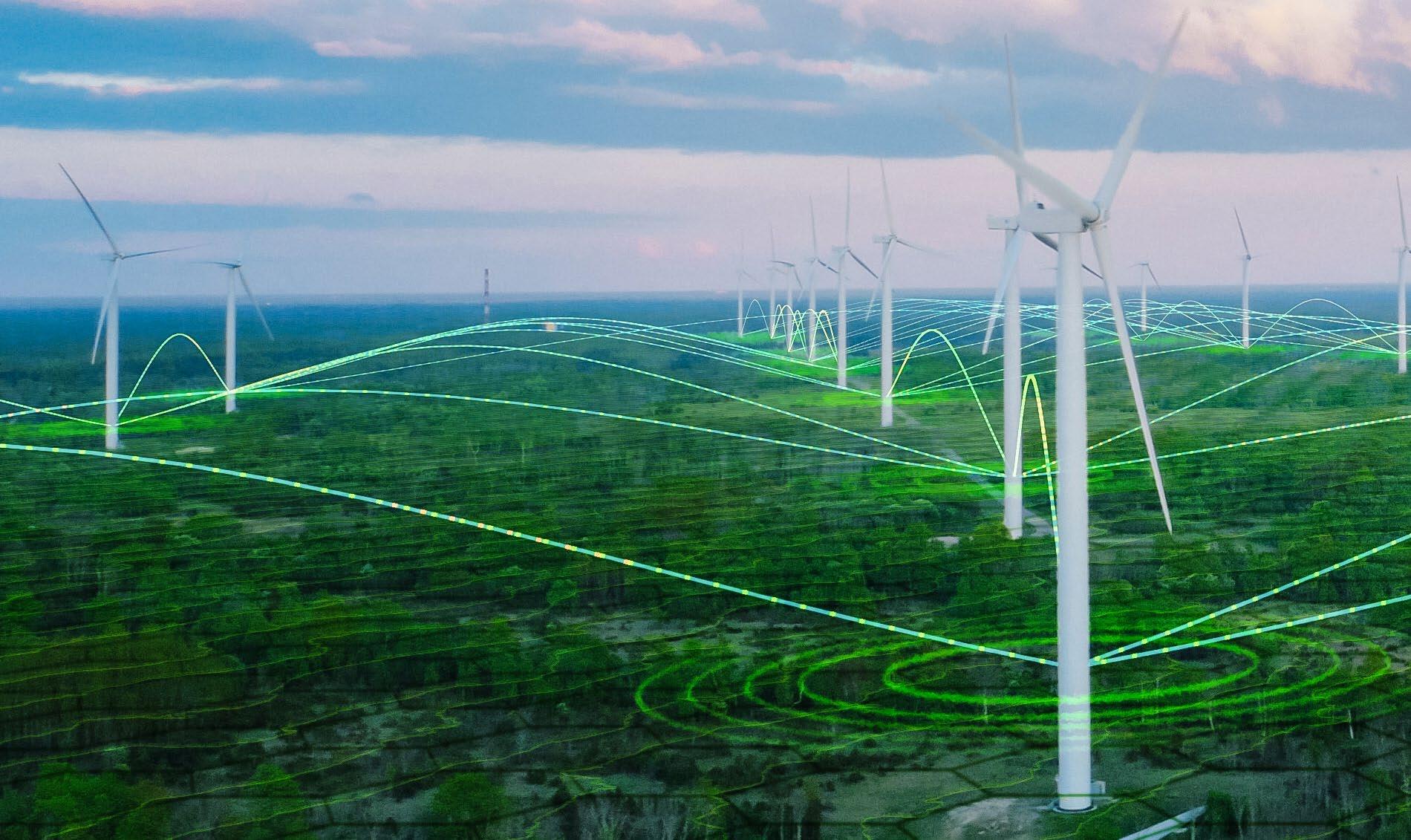
Electrical grids have seen many technological advancements since they began providing power in the 1880s. With computer-controlled systems common among power grids all over the world, systems can deliver power more efficiently than ever before.
However, as power grids rely more heavily on computerbased systems, there also comes increased vulnerability to cyberattacks. A well-designed cyberattack can bring a city to its knees, shutting down the electricity that keeps modern cities bustling, such as when hackers shut down a part of Ukraine’s power grid that supplied more than 230,000 people in 2015.
To prevent such a destructive cyberattack from taking power grids offline, Mohammadamin Moradi, an electrical engineering doctoral student, used artificial intelligence to analyze the most damaging attacks and best defenses possible. His work was guided by two faculty members in the School of Electrical, Computer and Energy Engineering, part of the Ira A. Fulton Schools of Engineering at Arizona State University: Ying-Cheng Lai, a regents professor of electrical engineering and advisor for Moradi’s doctoral degree, and Yang Weng, an assistant professor of electrical engineering.
The research was funded by the U.S. Department of Energy and the Israeli Ministry of Energy through the Israel-United States Binational Industrial Research and Development Foundation, or BIRD Foundation, to help both countries increase their cybersecurity defenses.
Moradi, Lai and Weng worked with a type of machine learning known as deep-Q reinforcement learning, combined with stochastic game theory, to simulate what cyberattacks could cause the most damage to a power grid and the best countermeasures to keep the grid operating as best it can in the face of such attacks. The team’s research paper, “Defending smart electrical power grids against cyberattacks with deep Q-learning,” was recently published in PRX Energy, a highly selective and new open-access journal of the American Physical Society focusing on modern energy issues.
“Power grid security has a substantial impact on Americans’ lives,” Moradi says. “Last year in Texas, there were power outages and people were freezing in winter. A well-planned, well-informed attacker can cause a lot of disasters, and we as defenders should be ready to act accordingly.”
A series of weather events caused the 2021 Texas power crisis, which left more than 4.5 million homes and businesses without power for more than two weeks. A cyberattack on the power grid has the potential to cause similar devastating effects. Moradi explored deep-Q learning in an effort to help bolster power grid cybersecurity.
Deep-Q learning is a subset of Q-learning, a type of machine learning that analyzes the results of inputs and seeks to maximize the reward for an action. In conventional Q-learning, different inputs from a user are mapped to output values in a table known as the Q-table. However, there are many challenges to creating a Q-table because it requires a large amount of computation as the number of input values increases. This can cause a computer to struggle and
malfunction when the number of inputs and outputs reaches a certain size, leading Moradi to explore deep-Q learning.
Deep-Q learning varies from traditional Q-learning because it doesn’t need a Q-table, decreasing the capacity needed for computing processes. Instead, deep-Q learning uses a neural network, which is a type of machine learning model, to estimate outputs and does not require the user to make a manual input for each output.
Moradi also chose deep-Q learning because of another factor important to power grid cybersecurity: It can be used for environments where parameters are unknown, just as the optimal attack and defense strategies aren’t known by a user before running the deep-Q learning simulation.
While deep-Q learning addresses the issue of computing power needed, the algorithm model the system uses to learn also needs to be optimized to ensure the best outcome. This is how Moradi picked the idea of modeling the situation as a stochastic game.
“I had a game theory class last semester, and I thought the attacker-defender relationship could be modeled as a game where each one tries to achieve its objectives,” Moradi says. In a two-person stochastic game, two antagonistic parties play a game with multiple stages seeking to maximize their rewards. In this case, the reward for the attacker is to cause as much damage to the power grid as possible, while the reward for the defender is to use the best strategy to minimize damage to the power grid.
“One game move is like one iteration of attacking and defending; the attacker launches an attack, and the defender figures out a way to respond,” Lai explains. “In general, the defender is not able to protect all lines simultaneously because of limited resources. This highlights the need for Q-learning because the defender should wisely select the set of lines to protect.”
Ultimately, Moradi’s simulation isn’t used to defend against the grid in real-time. Simulating cyberattacks and cyberdefense shows power grid weaknesses and the best ways for a human operator to defend against them to minimize cyberattack damage.
The research team says they are looking to further refine their work with future simulations, taking into account factors such as limited financial and human resources for defending the power grid.
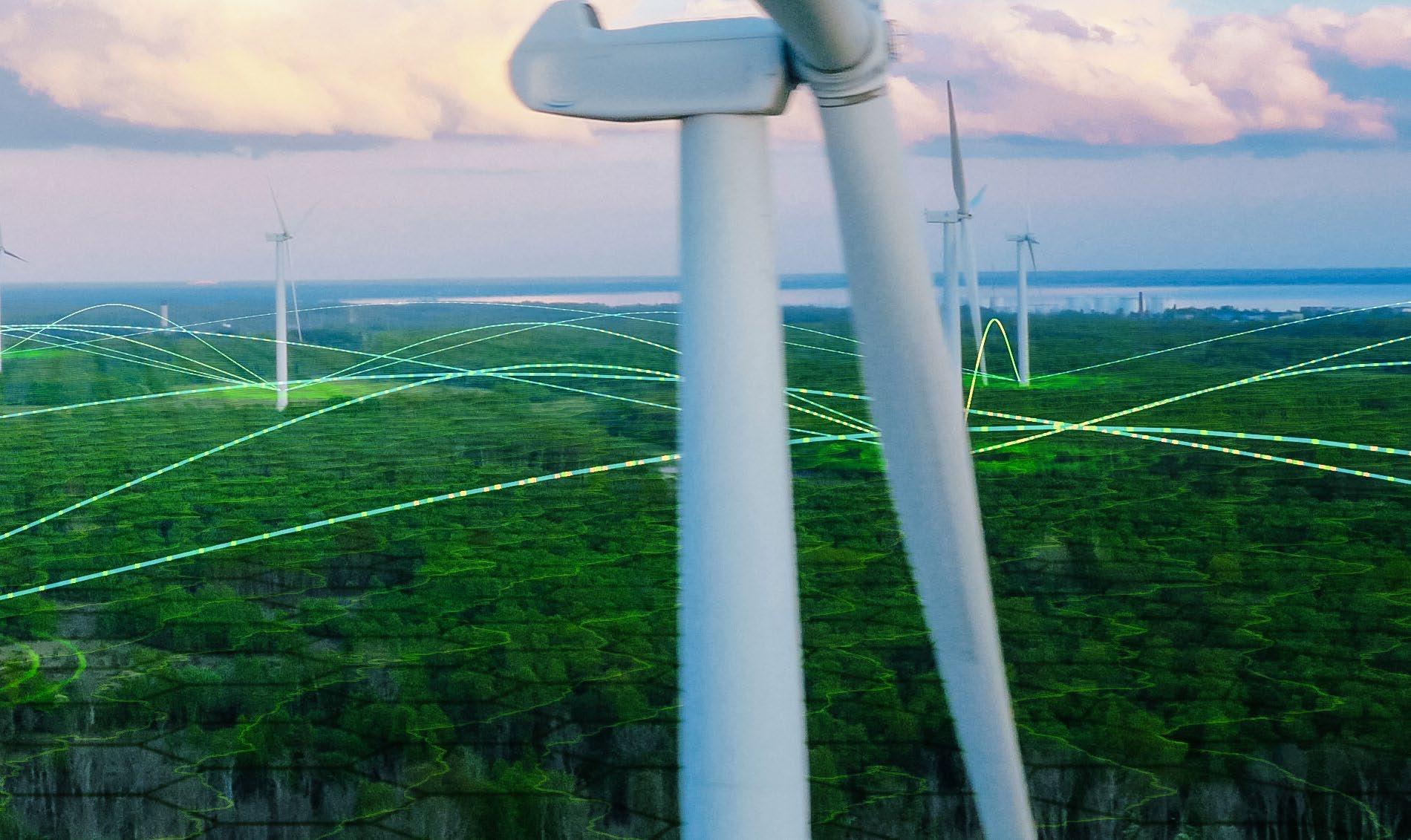
Weng, whose research focuses on power systems, machine learning and cyberphysical systems among other areas, says he anticipates that the research can be used for real-life cybersecurity.
“Being part of this project helped me appreciate the great idea of using this model to understand a physical system theoretically using AI solutions,” he says. “This will ensure that the work will transition to the real world, which is the core reason for this research.”
The means for cleaner energy is a prominent driver in environmental technologies. The University of Advancing Technology (UAT) is a leader in a variety of technological fields and the movement towards understanding cleaner energy is a key focus of its Environmental Science program. UAT offers a series of three courses to help students better understand the current paradigm shift towards a more sustainable, environmentally friendly and technological world.
Environmental Perspectives, the first Environmental Science course UAT offers, is a holistic study of the science behind sustainability challenges and how new technologies are being and will continue to be adapted to changing our way of life. The course focuses on evaluating the history of environmentalism in our modern culture and understanding the key components between economics and the environment. It introduces students to climate change and global warming, and evaluates the importance of environmental policy—specifically as it relates to technologies changing our energy sectors—as we attempt to move away from fossil fuels to cleaner renewable energy resources.
The second course UAT offers focuses specifically on past energy generation techniques and the future technologies of a clean energy grid. Rightfully named Green Technologies, the course reviews the history of fossil fuels and their impact on the North American electric grid system. The course then takes an in-depth look at the development and uses of solar, wind,
hydropower and other emerging clean energy technologies. The course finishes by evaluating possible future clean and green technological solutions to our ever-modernized world.
The final course provides students with a hands-on study of the practical applications of sustainability science. Sustainability in Practice is a course split into multiple sections, with topics including sustainable food production, limiting trash waste, understanding water depletion and pollution, and evaluating the use of plastics within our society.

However, one of the more popular topics within this course is its focus on clean energy technologies that can be put to use globally. Understanding the need for energy beyond the traditional electrical grid systems, students engage in an engineering design process to build a simple solar-powered oven that could be developed and put to use anywhere around the world. They then analyze their data and determine the best means to develop better designs for future models so as to support those most in need of simple, clean, renewable energy generation systems.
Newer clean energy systems will continue to advance and look to dominate the future of a more sustainable society. As the U.S. and the world look to move towards this goal of a more sustainable future, UAT will continue to play its part in helping students recognize past energy generating systems and support students in seeking to develop the technologies that will continue to drive mankind towards cleaner energy generating systems.
Erin Sullivan is digital brand manager at University of Advancing Technology.Environmental Science program leads to shift in thinking
With less than 1 microliter of blood plasma or serum, researchers can now use a customizable lab platform called PepSeq to observe how the tiny sample interacts with hundreds of thousands of protein building blocks.
The instructions for using PepSeq to analyze antibody responses, developed by scientists at the Translational Genomics Research Institute (TGen), part of City of Hope, and Northern Arizona University (NAU), was described in Nature Protocols.
The technology has already been used to analyze antibodies generated by COVID-19 vaccines, among other applications, says John Altin, assistant professor in TGen’s Pathogen Genomics and Integrated Cancer Genomics Divisions, and one of PepSeq’s creators.
The platform starts with designing a “library” of peptides of interest—short strings of amino acids that are the building blocks of proteins. Each peptide then is linked to a unique DNA tag, which allows the scientists to pinpoint which peptides are being targeted by which antibodies (or other proteins) in a sample.
Traditional analyses of this type can usually only track the response of an antibody to one peptide target at a time, but PepSeq expands this capability to thousands or hundreds of thousands of targets. “The technology for linking peptides to DNA traces back a long way, but it was really the development of next generation sequencing that allowed us to repurpose that peptide-DNA linkage and use it to generate assays on custom content at scale, like the SARS-CoV-2 virus,” says Altin.
It takes about two months to create a PepSeq library, with most of that time involving the design stages and only two to three weeks of lab work, Altin explains.
For COVID-19, “it was probably two or three months from the initial sign that this was going to be a serious global issue to us having some data on that very same, previously unknown, new virus,” Altin recalls. “That kind of rapid turnaround and the ability to study a completely new target like SARS-CoV-2 is one of the attractive features of the technology.”
The researchers want to expand the PepSeq system to create even longer peptides for the libraries. Most of the peptides now are about 30 amino acids long, although the scientists have created ones that are 64 amino acids long.
“But really I think the next frontier would be taking that up to the hundreds of amino acids and starting to make full-length proteins or domains, which may allow us to identify aspects of the response that we are currently unable to see,” Altin says.
For instance, some antibodies recognize a viral protein by the protein’s folding structure, which would require a full protein that includes that folding shape, he explains.
Altin and his colleagues, including Jason Ladne at NAU (cosenior author on the protocols paper), have been using the platform to explore the full range of viruses that infect humans and looking at ways that PepSeq could be developed as a surveillance tool to detect when animal viruses cross over into people.
The researchers also have a project underway to study antibody responses to the repertoire of bacteria that infect people and one centered on personalized cancer immunotherapies. “This technology is very well adapted to screening across that kind of broad diversity,” Altin says.
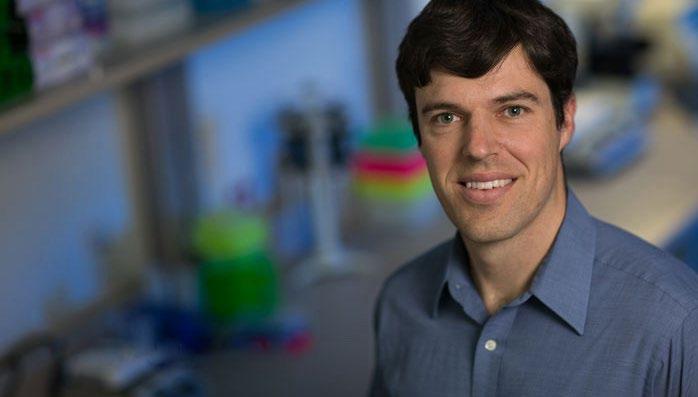
A&P MATERIAL SUPPLY is a premier printed circuit board manufacturer in the semiconductor industry. apmaterialsupply.com
ARIZONA MUNICIPAL STRATEGIES law firm specializes in municipal level lobbying, procurement and government relations. AZ-ms.com
AZ CROWN INVESTMENTS invests in ideas that excite people who are committed to seeing their idea all the way through. azcrown.com
BIRD RIDES is on a mission to provide eco-friendly transportation for everyone with safety and compliance first in 450+ cities. bird.co
BOTCO.AI is a HIPAA-compliant platform enabling meaningful and intelligent conversations between providers and consumers. Botco. ai is a fully automated, AI-powered marketing chat solution. botco.ai
CANCER TREATMENT CENTERS
OF AMERICA part of City of Hope, doctors and clinicians are part of multidisciplinary care teams led by experts focused on diagnosing and treating cancer. cancercenter.com
EARLE ASSOCIATES ARIZONA represents major manufacturers of semiconductor, electro-mechanical and system peripheral products, and serve customers that are manufacturers of computers, telecommunications and other products. earleaz.com
EARTHEN will provide grid-scale, energy storage solutions through its patent-pending Energy Pod, a CO2based scalable, carbon-negative, energy storage solution that allows storage of excess energy. earthen.energy
FULLCONTOUR is an independent design center that designs for dental labs and manufacturers around the world. fullcontour.com
GOEDUCATE’s mission is to provide students and job seekers with real-time career and credential insights, academic pathways and in-demand job opportunities through a new ecosystem. goeducate.com
HEALTHY COMMUNITIES AND WELLNESS ALLIANCE is a collective education-industrygovernment-community platform to reimagine Arizona’s behavioral health ecosystem. azflourishing.org
HIGH PERFORMANCE PV was developed to solve some of the most basic and critical challenges in the photovoltaic industry related to system design, installation, operation and maintenance. HighPerformancePV.com
HITORRA TECHNOLOGIES brings domain expertise across cloud, compute, OS, virtualization, SAN, storage, backup and recovery, network, security, unified communications/collaboration and BYOD solutions. hitorra.com
INANOBIO’s mission is to develop high-accuracy, early-stage disease diagnostics using transformative nano-biotechnology platforms and machine learning. inanobio.com
INTEGRATED AXIS TECHNOLOGY
GROUP technicians provide computer security services, technology services, IT consulting and business process solutions for businesses of all sizes. integratedaxis.com
LARSEN BAKER specializes in new development, redevelopment of existing buildings and leasing/ management of restaurant, retail, office and industrial properties in Southern Arizona. larsenbaker.com
LASER COMPONENTS DETECTOR GROUP has always defined itself as a solution provider for optical and optoelectronic technologies. lasercomponents.com
LONGAN VISION is a provider of design and sales of enhanced vision and communication devices. longanvision.com
MARC PERRY ARCHITECT strives to provide the maximum value to clients by being efficient in its work effort while presenting creative design solutions to the project. linkedin.com/in/marc-perry-3b9452a/
MASKINE LLC has engineers who are smart and have the right experience. Regardless of the platform and technology, the most important part of every project is the engineer who brings everything together. maskinellc.com
MULTITECH SYSTEMS’ extensive portfolio of technologies paired with design, integration and manufacturing expertise result in unparalleled performance, simplicity and user experience. multitech.com
ONE STEP SECURE IT SERVICES’ team works with clients to identify, prioritize and close IT strategy gaps, strengthening their environment and ensuring their technology delivers a competitive advantage for businesses. onestepsecureit.com
PHOENIX BUSINESS RADIOX features business professionals interviewing their peers, drilling down on the critical issues and delivering practical information to an engaged audience. PhoenixBusinessRadioX.com
PRECISION GEOGRAPHIC is known for helping clients drive business decisions and generate results through innovative use of maps and geospatial technology. precisiongeographic.com
PROJECT LEAD THE WAY has grown from a high school engineering program to offering comprehensive preK-12 pathways in computer science, engineering and biomedical science. pltw.org
RINCON OPTICAL CONSULTING focuses on supporting companies that need optical engineering support for proof of concept design, analysis, systems engineering, project management, assembly, and integration and test. rinconopticalconsulting.com
RISING CLOUD switches clients’ workloads to a more intelligent cloud faster and with better availability to remove regional downtime risk, more affordability and smarter scaling. risingcloud.com
RK SQUARED designs and delivers custom wireless solutions for all venues. Its expertise includes DAS, D-RAN and small cell supporting commercial cellular, private LTE, public safety and Wi-Fi. rksquared.net
SERASTAR TECHNOLOGIES has developed and patented the world’s first tactical on the move, H.265 video streaming platforms that deliver secure video, VOIP, and KLV metadata. serastar.com
SONATAFY TECHNOLOGY is a nearshore software development company providing enterprise software development options for cloud and mobile applications. sonatafy.com
TECHSMART provides school districts with the professional development, curriculum and platform they need to make equitable computer science education a reality. techsmart.codes
TRANSFORM 42 executes business development plans, oversees operations, leads financial functions and establishes governance structures to maintain compliance in highly regulated industries. transform42inc.com
WELLKASA’s mission is to help clients discover safe and effective supplements that improve quality of life. wellkasa.com
WESTMARC is a broad-based coalition of 15 communities in western Maricopa County representing more than 35% of the county’s population. westmarc.org
YATES LLC IP’s focus areas include worldwide patent portfolio development, and certified information privacy professional/Europe.
To join the Arizona Technology Council, a member-supported group representing the interests of the state’s technology ecosystem, visit www.aztechcouncil.org.
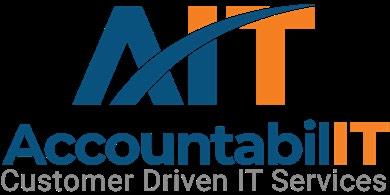













We work with today’s most innovative technology companies to create marketing strategies, cutting-edge content, and award-winning campaigns to help you stand out, win customers, and accelerate growth.
Relied on by more than a third of the Fortune 500 technology companies. You can trust us too.
